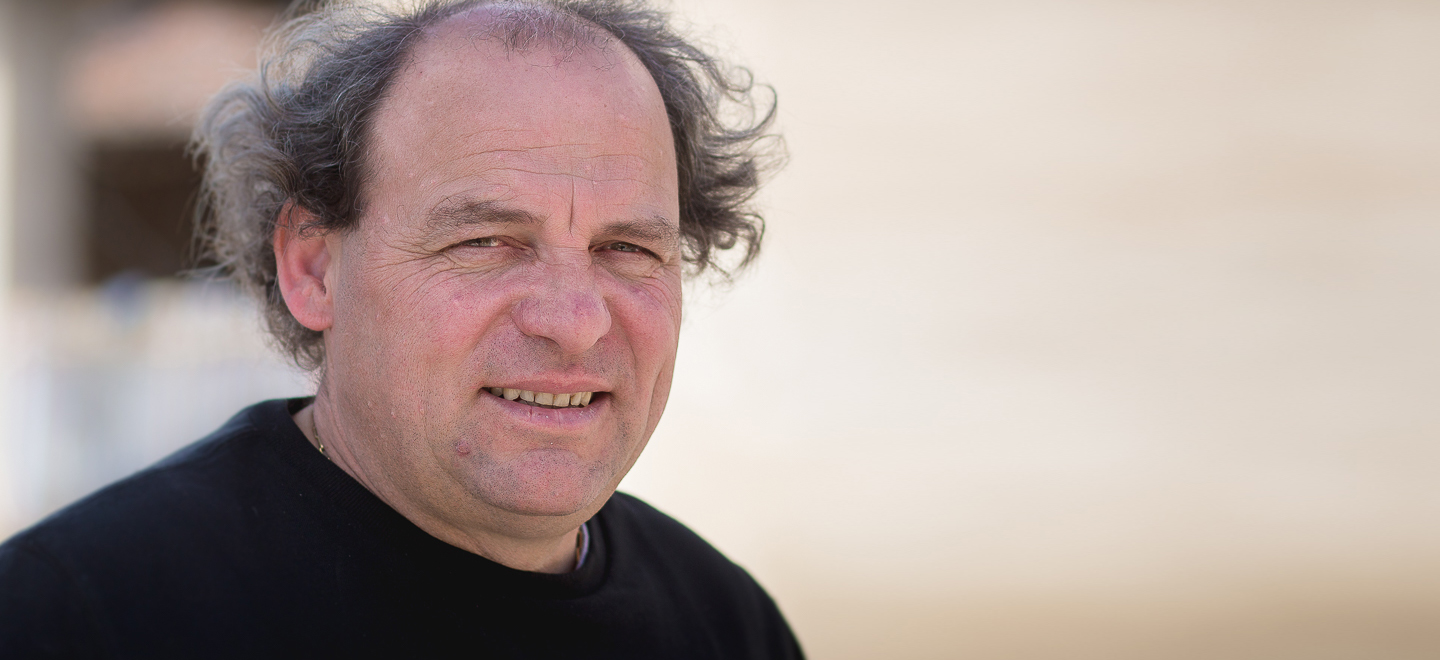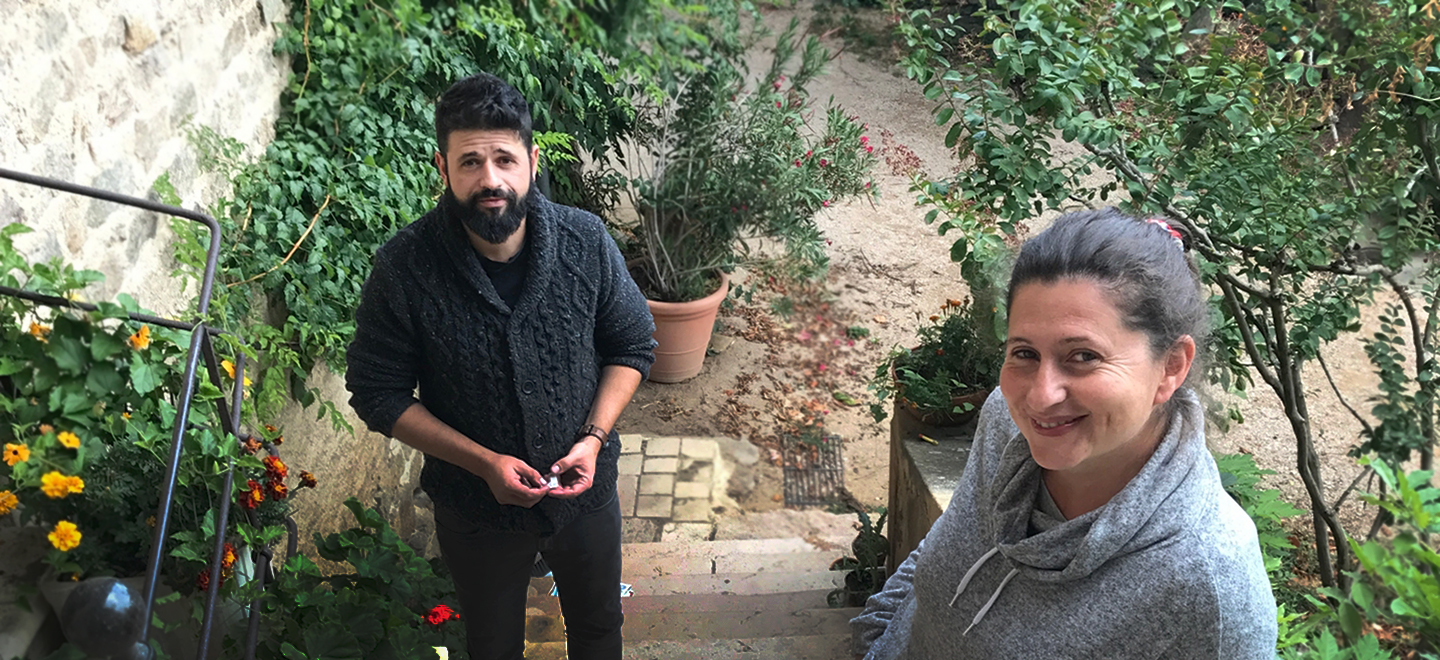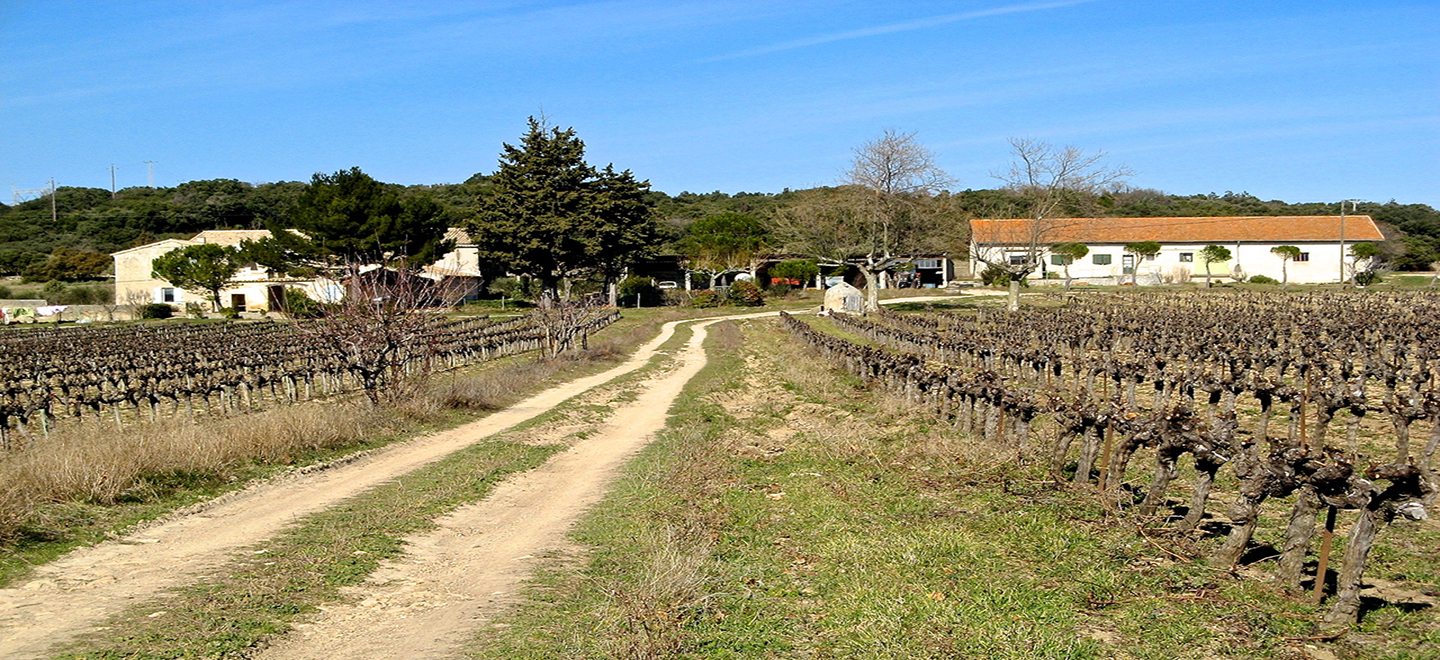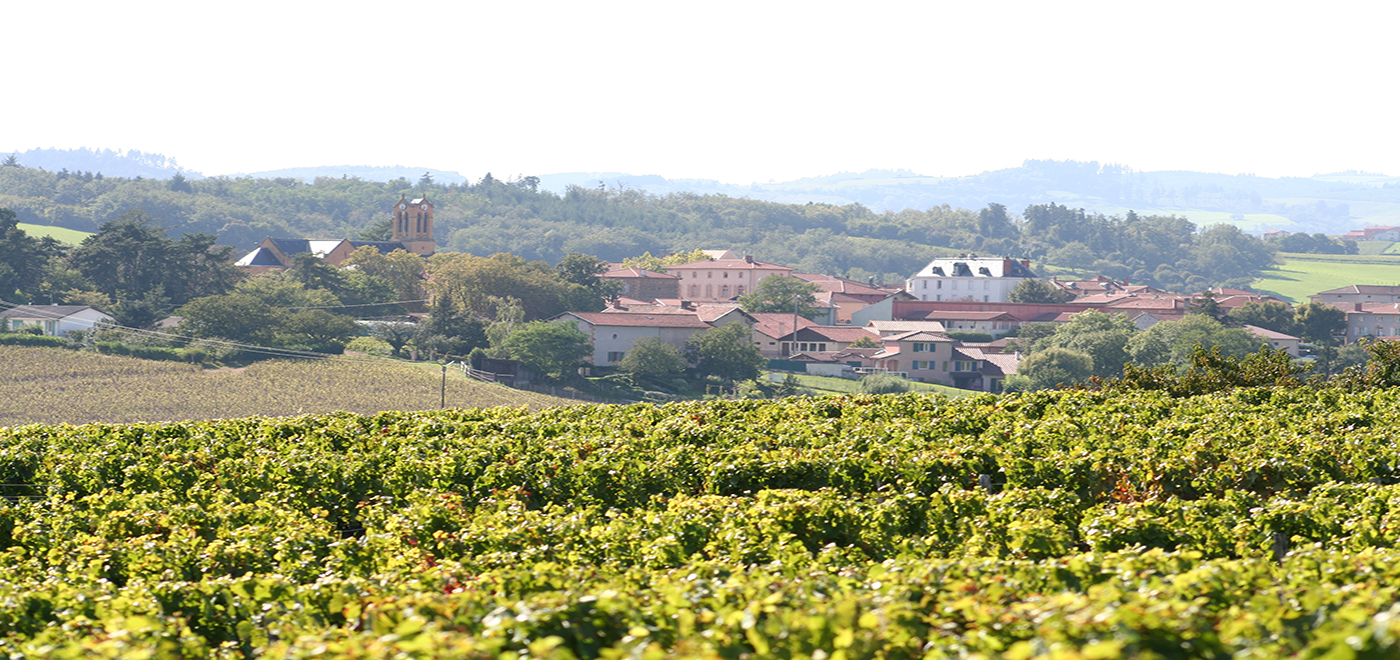Producers
-
Description:
Deep Down is a refreshing new look at Marlborough. All certified organic, these are honest wines forged with intuition and heart.
Deep Down was founded by Clive Dougall, who was Winemaker at Seresin Estate for 12 years, and Peter Lorimer. They met at an opportune time as they were both looking to start a new project to celebrate distinct and delicious wines within an ethical and transparent business model.
The pair decided to celebrate Marlborough’s diverse landscapes and work with families on the following farms: The Wrekin, Tua Marina & Ashmore. “We feel blessed to be working with people who share our philosophies and farm in tune with nature,” says Clive. ‘’After 14 years of being involved in organics and biodynamics you realize that to make exceptional wine we have to give back to our vines and soils. Wines of integrity come from great land, and that takes plenty of work, plenty of compost and plenty of biodiversity.”
The team's focus is to deliver distinct yet classic wines full of personality; detail, restraint and balance are hallmarks. Clive’s extended experience with the region and hands-off winemaking ensure they protect the expression of the fruit, rather than obscuring it with additions. Deep Down’s wines are all fermented naturally by the vineyard yeasts that live on the grapes, which promotes the true character of the vineyard, while delivering increased depth, complexity and texture to the wines.
As of 2023, Deep Down is Certified B Corporation, a relatively young movement that in short, celebrates companies that are "doing the right thing." The process to get certified is long and there are a lot of criteria for receiving and keeping status. There are very few companies that go through the process but the pair believed that becoming certified was a natural step as their main ethos has always been “to craft authentic wines that inspire and dispose of convention and chemical reliance.
The meaning of Deep Down is trusting your gut and intuition and following the path you truly believe in.
BOWLER E-Zine Issue 3 | July 2021: Deep Dive into Deep Down and Steadfast Views of Organics in New Zealand
Image: Region:
Region: -
Description:
Del Que Toma el Cardenal—was born in 2014 in response to the industrialization of mezcal. With mezcal’s rise in popularity, more and more of this spirit is being produced using less-traditional methods. Major brands are buying up the agave farms that had serviced the small producers, putting the future of independent Mexican spirits producers at risk.
A small group of these producers, in partnership with entrepreneurs from the city of Oaxaca de Juárez, founded Del Que Toma el Cardenal in an effort to preserve the ancestral legacy of their families and to safeguard the multi-generational wisdom that has fueled international interest in agave spirits. The producers who participate in Del Que Toma el Cardenal are from the municipality of Santo Domingo Albarradas, a Zapotec community located Oaxaca's Valles Centrales region, in the Tlacolula district. They follow a set of rules that is more rigorous than the criteria established to certify mezcal.
The Fundamentals of Del Que Toma el Cardenal are as follows:
- The cultivation of agaves is done by the same producers of Santo Domingo Albarradas and when more agave is required, it is paid at a value equal to or greater than the market to the agaveros of the region
- Only mature agave are used for production.
- The Piñas are cooked in wood ovens with stones from the nearby rivers in holes dug in the ground.
- The piñas are ground in a tahona pulled by a mule with a stone wheel.
- It is fermented in oak tubs and no chemicals are added to the process, the fermentation takes place naturally, so it takes from twenty to thirty days in its fermentation
- The distillation is carried out in a copper pot still, two distillations are carried out both for espadín and for the tobalá
- The distilled agave spirit cannot be cut with water, but it may be adjusted using the puntas and colas (heads and tails) from the same distillation
- As a rule we have to charge a fair price to our customers, we are below the price of other products even though our distillate is of higher quality than the vast majority of other brands
The resident expert overseeing Del Que Toma el Cardenal is Don Fortunato Santiago Pérez, a third generation maestro from a family of producers native to this region. It is families such as Don Fortunato's who have passed down and preserved traditional practices, including organic farming, communal work, and the search for purity, quality, taste, and texture in the final spirit.
Much like wine, these heirloom spirits reflect the place they were made (terroir), the agave they were made from (many are allowed), the source of water they were made with, and the 400 decisions that the producer made in the process. The agaves are grown in the basin of the Rio Grande, surrounded by high mountains where the temperate climate provides ideal conditions for long-growth, sugar-rich agaves. The abundance of mineral-rich water from the Santo Domingo, Santa Catarina, and La Calavera rivers plays a pivotal role in the flavor and aromas of the agaves.
The result? Spirits that reflect their terroir as clearly as they represent the culture from which they come. We are proud to welcome this cooperative agave-spirits project to our portfolio.
Image: Region:
Region: -
Description:
Thank you to importger Louis/Dressner for this estate profile:
(Click here for more about Georges Descombes on the LDM website)
Located in Vermont, a tiny hamlet in Villié-Morgon, Georges Descombes is the unofficial fifth member of the iconic "Gang of Four": Marcel Lapierre, Jean Foillard, Jean-Paul Thévenet and Guy Breton. In his teens, Georges worked with his vigneron father in the vines as well as a local bottling company. Hopping around from cellar to cellar gave him a chance to try a large amount of different estates, and the first time he tasted a Lapierre wine, young Georges was blown away by its purity and elegance. Then and there, he decided he would try to make wines like Marcel's.
Georges took over the estate in 1988 and immediately started shifting viticultural and oenological practices forward. Though his father had always worked traditionally in the vineyards and cellar, Georges decided to push things further by practicing organic viticulture (certified by Ecocert for many years, but now practicing without certification) and eliminating all entrants or manipulation during vinification. A minuscule dose of sulfur, less than a hundredth of what an organically certified vigneron is legally allowed to use, is added at bottling to help preserve the wines.
In total, Georges owns about 15.5 hectares of land spread over five AOC's : 7.5 hectares in Morgon, 3.5 hectares in Brouilly, 2 hectares in Regnié, 0.5 hectare in Chiroubles and 2 hectares of Beaujolais-Villages. Grapes are hand-harvested, then stored in a temperature controlled container before being placed in 60hl cement tanks. A traditional, semi-carbonic maceration occurs, and the wine ferments from its ambient yeasts. For each Cru, Georges produces old vine cuvées which are vinified separately, then aged in barrel six months before bottling.
Georges is a firm believer that his wines benefit from time in bottle, and always releases them up to a year later than most of his colleagues, particularly the old vine releases.
Image: Region:
Region: -
Description:
Thank you to importer Louis/Dressner for this Desvignes profile:
(Click here for more on Desvignes on the LDM website and here for the Desvignes website)
Louis-Claude Desvignes was of the sparrow-type Beaujolais vigneron: raven-black hair that was, more often than not, standing in various directions, bright eyes and prominent nose, and a well-pitched, humorous cackle. His energy level was also twittery, barely standing still for a minute during a tasting in his cellars, offering a bottle of this and a bottle of that: various experimentations, filtrations, perhaps an older vintage of something educational. The seriousness of his winemaking, however, was never in doubt.
Louis-Claude passed away in 2021; at that point he'd been long retired, having passed the estate to his children Claude-Emmanuelle and Louis-Benoît, the eight generation to work this land. Emmanuelle joined in 2001 and Benoît in 2004; while little has changed stylistically, their their arrival has brought some major shifts. 100% of the production is now estate-bottled (Louis-Claude sold about 50% of his production to négociants), the estate is now certified organic and the two have started a small négociant largely but not exclusively focused on producing single-vineyard expressions within Morgon.
The family's historic vineyards have been within the Morgon cru for generations. Their first cuvée comes from multiple, complimentary plots blended together to produce "La Voûte Saint-Vincent" The majority of the vines are on the Côte du Py in the center of Morgon, the fruit of which is of far superior quality to that produced in the outlying areas of the appellation. If there were a classification of vineyards in Morgon, Côte du Py would be a premier cru and Javernières a grand cru. They are located on the best exposition of the hill, with soil of decomposed schist, and Javernières is a plot within the Côte du Py with a little more clay.
Throughout the 1990's and 2000's Louis-Claude began picking fruit later than the other vignerons in the area with a mind to get fruit at optimal ripeness. As the planet continues to grow hotter, his children have re-evaluated these methods without sacrificing the grapes' full potential. The wines are vinified by the traditional cru Beaujolais method with a grille to keep the cap submerged. Recently, the fermentation has been longer and more controlled than in the past in order to extract the color and material that are the most obvious virtues of this wine.
Morgon is, along with Moulin-à-Vent, the most age worthy of the Cru Beaujolais and Desvignes wines are fine examples. The wines age terrifically and take on the character of Pinot Noir, or pinotize (the term used in Beaujolais). When young, the character is of dark cherry, raspberry and blackcurrant. With age, the wines become more earthy, velvety with cocoa and coffee tones.
Image: Region:
Region: -
Description:
Hunter Laing & Co. was established in 2013, when the brothers Fred and Stewart of Douglas Laing & Co decided to split the company assets and operate their own independent bottling operations.
A tribute to the artisans in Scotland’s distilleries who year after year produce such wonderful spirits, the Distiller’s Art series is a range of single-cask bottlings showcasing the character of a region, or of a distillery in particular.
Made without caramel coloring or chill-filtration, these single malts are chosen from specially selected individual bourbon and sherry casks from well-known distilleries.
Each bottle is individually numbered with the date of distillation. Due to the limited nature of these releases please contact us for updated inventory.
Image: Region:
Region: -
Description:
Established in 1967, Castelli is a family-owned and operated, small-production distillery in Piedmont; it is now run by the second generation, Sergio.
Grappa is distilled from the skins, pulp, seeds, and stems (i.e., the pomace) left over from winemaking after pressing the grapes— the fresher the better— and all of their pomace is sourced locally from wineries with whom they have long-term relationships. Many of their producers farm their vines organically. The pomace is transported to the distillery in small containers and aged for in an oxygen-free environment; this special aging process helps to deepen the flavor and structure of the finished grappa. When the pomace is ready, it is distilled and aged a minimum of 4 years in stainless steel tanks.
These grappas are beautiful expressions of the grapes and vineyards of the Langhe and we are proud to welcome them to our portfolio.
BOWLER E-Zine Issue 3 | July 2021: Sipping on the History and Production of Grappa
Image: Region:
Region: -
Description:
In 2011, Raul Suarez took over his family vineyards that date back four generations. Located in the Ribeiras do Miño subzone of Ribeira Sacra, Raul only has one hectare of vines and makes just one wine, a singular, very elegant Mencia. He farms organically, without the use of herbicides, and his yields are naturally low due to the old age of the vines. He makes the wine at Adegas Guimaro with the blessing of Pedro Pérez, an old friend, renting a small corner of his winery. The grapes are hand harvested, crushed by foot, and fermented with indigenous yeasts in stainless steel tanks, aging for 13 months in used French Burgundy barrels, and subsequently in bottle for an extra couple of years before release. The name is a play on words between the name of the grape, Mencia, and the roman goddess of forgiveness and benevolence, Clementia.
Image: Region:
Region: -
Description:
Belargus was birthed out of the wine estate of Jo Pithon, a legend in the Anjou, but reinvigorated by a man named Ivan Massonat who also owns part of Philippe Pacalet in Burgundy. When Ivan purchased the estate, he set about to create a crack team to produce a stable of virtual Grand Cru wines in the Anjou.
The property is built around the most spectacular parcel of vines I’ve ever seen in the Loire, the famous Les Treilles hillside, a sort of Côte Rotie of the Loire, planted entirely to Chenin Blanc. In addition to the parcels already part of the former domaine, Ivan purchased a small parcel in Savennières, 1/3 of the Grand Cru of Quart de Chaume! (which they are mostly vinifying dry), and additional parcels adjacent to the famous monopole of Les Treilles. The entire property is farmed biodynamically. The property is 100% Chenin Blanc, with the vast majority vinified dry, even when coming from the Grand Cru of Quarts de Chaume. Here is a breakdown of the domaine’s parcels and the team behind it, by Jon David Headrick:
THE TERROIRS:
Les Treilles – A monopole of almost 10 hectares on extremely steep slopes, some as steep as 70 degrees. The vines are planted on a combination of very old calcaire (much older than that found in the rest of the Loire) and schist. It produces wines of extremely long aging and finish.Bonnes Blanches – One of the most famous parcels in the Anjou owned by growers such as Pierre-Bise, Ogereau, Mosse, and others. This is historically made into sweet wine, but Belargus vinifies it dry.
Quart de Chaume Grand Cru – Belargus own 10 hectares of this Grand Cru and vinifies it mostly into one of their top dry wines. Stunning parcel, stunning wines. This is separated into three separate parcels by exposition and soil type into four wines.
Ruchères in Savennières – This is at the bottom of Roches-aux-Moines, looking out over the Loire river.
THE TEAM:
Adrien Moreau – Winemaker. Formerly at Cheval Blanc, Haut-Brion, Roederer.Guy Bossard – Lead biodynamic consultant. Most of you know the epic wines of Guy Bossard in Muscadet. He has been a pioneer of biodynamic farming in the region and has made some of the Loire’s most stunning wines.
Jo Pithon – Jo, the former owner of the estate, is now part of the team and is the resident historian of the various parcels farmed by Belargus. Jo singlehandedly converted the monopole of Les Treilles from scrub bush to terraced vineyards. It is the most stunning piece of land I’ve ever seen in the Loire outside of the possible exception of La Coulée de Serrant.
The estate is composed of 24 hectares farmed at extremely low yields (an average of 25 hl/ha instead of the normal 60 hl/ha.). The meticulous and perfect farming is equaled in the cellar, where winemaking is slow and unobtrusive. Fermentations are spontaneous and made in French wood, lasting from a week to many months, depending on the plot.
Image: Region:
Region: -
Description:
While co-ops still play a vital role in producing and selling wine across France, they are generally not known for innovation, let alone garnering attention as the quality leader in an appellation. While most cooperatives operate by paying growers by volume, relatively few pay for quality. Almost none are largely organically farmed, segregate their fermentations by parcel and soil type, rely solely on indigenous yeasts, and resolutely avoid enzymes, winemaking tricks, and excessive SO2. If you were aware of such a cooperative, wouldn’t you be intrigued?
These practices were not initially what drew Eric Solomon to visit Les Vignerons d’Estezargues in the mid-1990s but rumors of some soulful Syrah that was being bulked out to larger negociants. So curious to see for himself, Eric visited Estezargues and tasted what would become Domaine d’Andezon Syrah, one of the most dependable and affordable Côtes-du-Rhônes in our portfolio.
Les Vignerons d’Estézagues was only founded a few years before Eric’s fateful visit. Ten local families with small estates banded together to form an association to pool their resources and vinify their own wines. Rather than make generic bulk wine, from the start, they vinified their sites separately. Soon they discovered their best plots and cuvées from their varied terroirs and varieties. As chance would have it, Domaine d’Andezon is a member/estate of the cooperative, and they grow some rather remarkable Syrah. Since that time, we’ve added La Granacha, a cuvée of Grenache grown on a soil covered by nearly a meter of galets – a dead ringer for a mini-Châteauneuf-du-Pape.
This profile, including all tasting notes and photos, was edited from the European Cellars website. For more information please visit: European Cellars.
Image: Region:
Region: -
Description:
Domaine de Cornillac is a fourth generation family-owned winery with 9.5 hectares in the town of Saint Vérand in the south of Beaujolais. The soil is a complex mix of clay, schist, sand, and plagiogranite. The vines are on hillsides at 400 meters altitude which brings freshness to the wine. This qualitative terroir gives wines with ample body and length. Schist has pockets of clay, layered with other minerals compressed into thin layers. The clay gives the wines depth and creates a reservoir of water, helping out the vines in dry periods. The plagiogranite layers give minerality, tension, and length to the wine. The plagiogranite is very similar to the blue granite found in the Côte de Brouilly. The decomposed granite gives dry extract to the wines, which translates to how the wine hangs on the palate.
The grapes are hand-harvested. Whole clusters are kept depending on the maturity of the stems. Temperature controlled tanks are used to manage the speed of the alcoholic fermentation. Pump-overs happen daily to break the cap and punch downs are used depending on the vintage.
Domaine de Cornillac is certified sustainable by HVE (Haute Valeur Ecologique), which takes into consideration the ecological infrastructure not only of the vineyards, but everything touching the vineyards – forests, hedges, etc. Cover crops are used to restore land where the vines have been removed. The core ethos is that natural habitats of flora and fauna are respected.Image: Region:
Region: